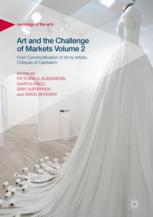

Most ebook files are in PDF format, so you can easily read them using various software such as Foxit Reader or directly on the Google Chrome browser.
Some ebook files are released by publishers in other formats such as .awz, .mobi, .epub, .fb2, etc. You may need to install specific software to read these formats on mobile/PC, such as Calibre.
Please read the tutorial at this link: https://ebookbell.com/faq
We offer FREE conversion to the popular formats you request; however, this may take some time. Therefore, right after payment, please email us, and we will try to provide the service as quickly as possible.
For some exceptional file formats or broken links (if any), please refrain from opening any disputes. Instead, email us first, and we will try to assist within a maximum of 6 hours.
EbookBell Team

5.0
58 reviewsArt and the Challenge of Markets Volumes 1 & 2 examine the politics of art and culture in light of the profound changes that have taken place in the world order since the 1980s and 1990s. The contributors explore how in these two decades, the neoliberal or market-based model of capitalism started to spread from the economic realm to other areas of society. As a result, many aspects of contemporary Western societies increasingly function in the same way as the private enterprise sector under traditional market capitalism.
This second volume analyses the relationships of art with contemporary capitalist economies and instrumentalist cultural policies, and examines several varieties of capitalist-critical and alternative art forms that exist in today’s art worlds. It also addresses the vexed issues of art controversies and censorship. The chapters cover issues such as the culturalization of the economy, aesthetics and anti-aesthetics, the societal benefits of works of art, art's responsibility to society, "artivism", activist arts as protest and capitalism-critical works, and controversies over nudity in art, as well as considering the marketisation of emerging visual arts worlds in East Asia. The book ends with the a concluding chapter suggesting that even in today's marketized and commercialized environments, art will find a way.
Both volumes provide students and scholars across a range of disciplines with an incisive, comparative overview of the politics of art and culture and national, international and transnational art worlds in contemporary capitalism.